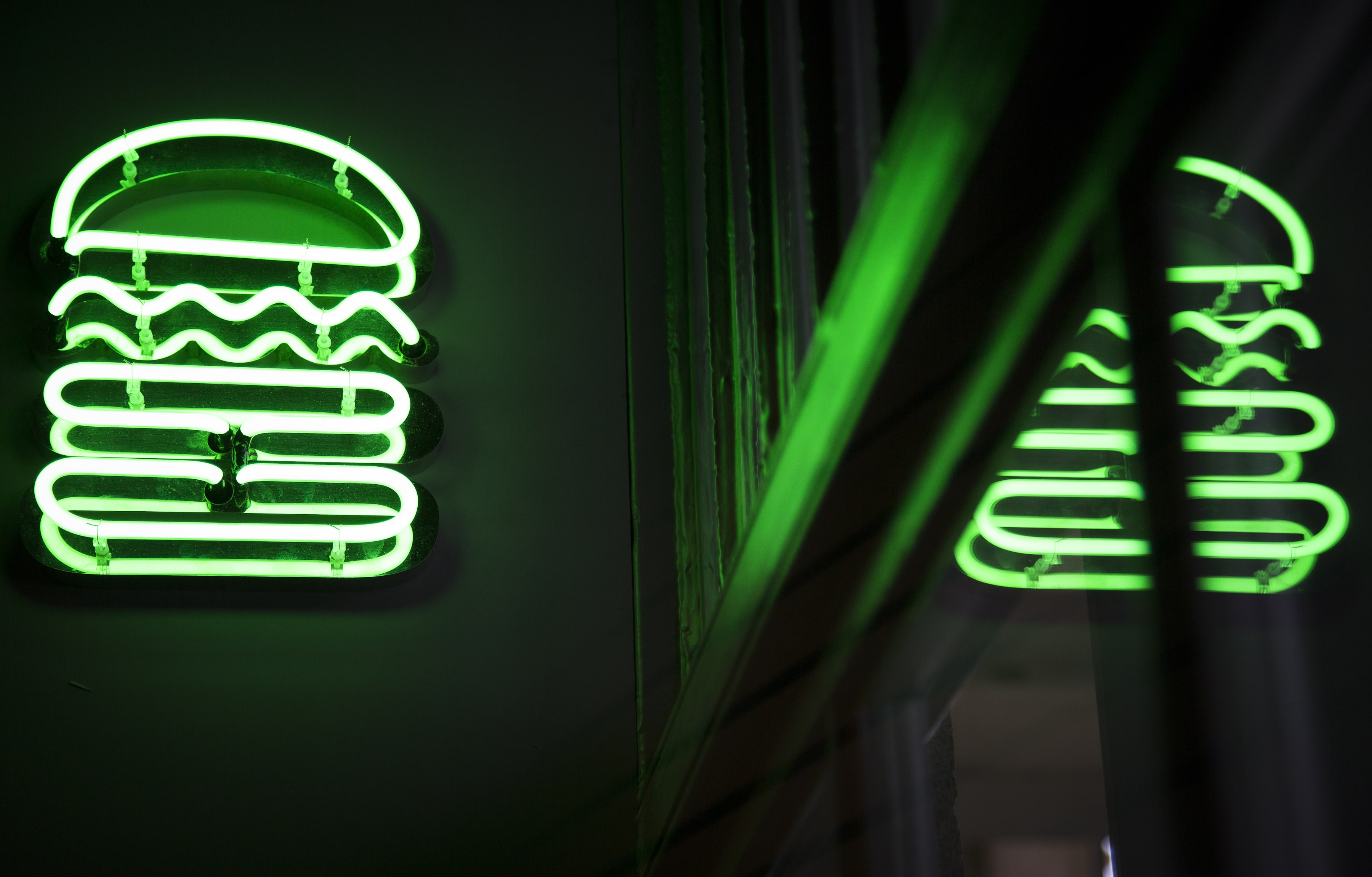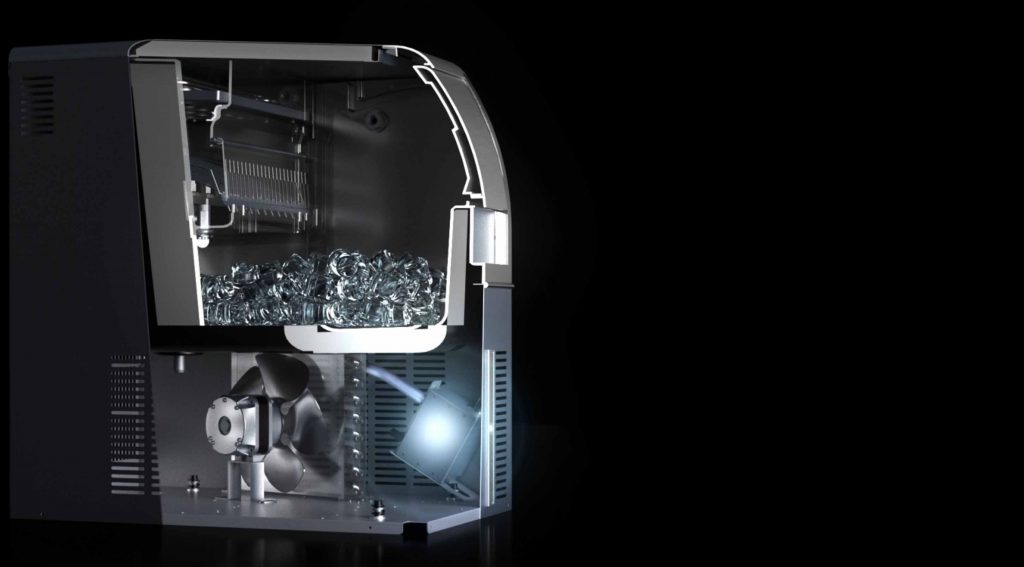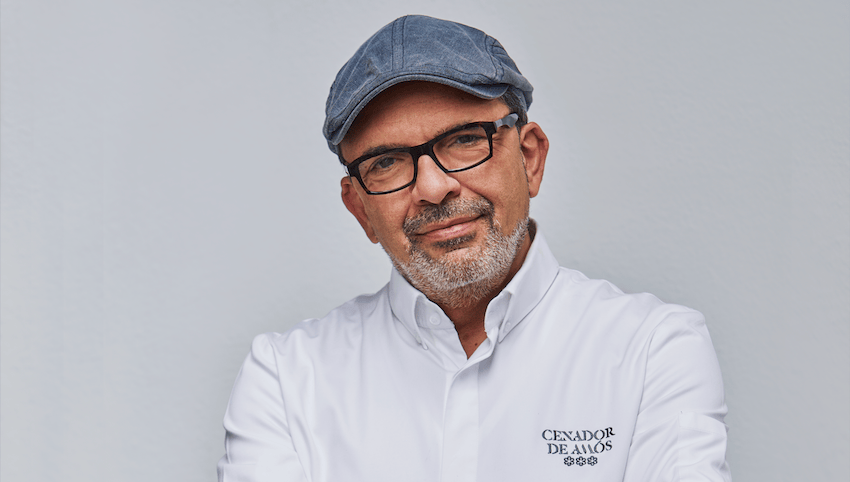
For a project that started out as a New York City hot dog cart supporting a nearby art installation, it’s fair to say the Shake Shack burger chain has exceeded expectations. Originally conceived by restaurateur Danny Meyer – famous for his fine dining group – in 2001, it quickly went on to attract hour-long lines and a reputation as the best among a wave of “better burger” chains that have cropped up in recent years.
“We thought we’d open in a park, only in the summer, from 12pm-4pm and we’d serve maybe 50 people a day,” says culinary director Mark Rosati. “We had massive lines every day and after a year we decided to open all year round. We didn’t think anybody would turn up in winter, but there was still a line.”
Meyer’s Union Square Hospitality Groupopened the original Shake Shack restaurant in Madison Square Park in 2004, and 12 years on there are nearly 100 outposts spread across the world, from Los Angeles, Miami and New York City to London, Istanbul and Moscow. The chain has a big presence in the Middle East and has also opened in Japan. Korea will follow soon.
An inclusive culture
Rosati says his entry into the company is symptomatic of an inclusive culture and a company that’s not afraid to take a chance on people with the right attitude. He joined the Union Square Hospitality Group almost as a joke; as a fan and a frequent guest at the Gramercy Tavern, he asked the chef so many questions about how his favourite dishes were cooked that eventually he was invited into the kitchen to help the cooks prep. “I learned how to clean a wild mushroom and prepare sweetbreads. It was brilliant,” he explains. “After a while, I got more serious and, to show them I had the will and drive, I offered to work for free and for two months I joined the morning crew preparing lunch.”
The rest, as they say, is history. With no prior cooking qualification or experience, Rosati joined the kitchen staff as a cook in the Gramercy Tavern where he worked all stations for the following three years, working under first Tom Colicchio and then Michael Anthony. At this point he wondered what it would be like to move to the service side or management. The only restaurant in the group that offered this was Shake Shack – the cart near the art installation. Rosati was not convinced he’d enjoy the move from fine dining to fast casual.
“I went for an interview with our now CEO Randy Garutti; he could see I had one foot in and one foot out so we agreed I’d join the Shake Shack kitchen for a shift and make up my mind after,” he says. “I fell in love right away. I started off because I loved the food in the Gramercy but the culture and the hospitality, which Danny Meyer is famous for, was very much alive at the Shake Shack too.”
The idea of the Shake Shack takes root in the original American burger restaurants from the 1950s. “We realised that where fast food went wrong was when it became very modern and very fast. It was less about quality and more about the speed of the experience. The US in the 1950s was when automobiles became popular; you’d go with friends to the local restaurant, sitting outside chatting with friends. It was a local gathering place,” says Rosati.
“There’s nothing wrong with hamburgers; what’s wrong is the way they are packaged and served right now and in the 1970s and 1980s it got to a point when you lost that human element of the experience. You didn’t even have to come into the restaurant, you could order through a box out front. But you can’t put a price on the human element.”
Four years after the first opening, Shake Shack opened a second location on the Upper West Side in New York – the location that was to become the blueprint for Shacks across the world. For Rosati, it presented an opportunity to be a part of shaping the future of the company. “All the other restaurants in the group are magical, but they are so well established and it would have been hard for me to add my voice to them, even if there is a collaborative culture,” he explains. “What I liked about Shake Shack was that we were a seasonal restaurant with no real aspiration to grow. When I joined, we were tasked with answering the question, ‘if we were to open another location, how would we do it?’ The day we opened Upper West Side was amazing.”
The little details
The team considered every detail, starting from scratch again. The challenge was to find a way to transfer all the methods from the original – much smaller – kitchen. From the outset, the philosophy was to make it a neighbourhood restaurant, reflecting the local area. “We wanted to be part of the community and we had a wonderful location, across the road from the Museum of Natural History,” says Rosati.
They decided to create a couple of items specific to the location; one of them in collaboration with the museum – every time one was sold a donation went to the museum. “The menu on location number two was meant to reflect the Upper West Side. It may be a different way to think, but as a restaurant group born out of fine dining, that is how we make our decisions,” he explains. “As much as we agonise over what trays to serve fries on, our guys are also agonising over how the seating feels in a fine dining restaurant, what the light is like – does it make people feel happy? We’d say the same things about what we were doing.”
Location number three opened in the Citi Field stadium a year later in 2009 and, shortly after, the chain made the leap to open an outlet outside New York City – in Miami – much to their own surprise. “A developer approached us with this amazing location and asked us to be part of it. We said, ‘Shake Shack? Are you sure you’ve got the right guys?’ But we thought we’d give it a shot and it went really well,” he says.
Since then, Shake Shack has slowly spread to different parts of the world, but a decision to open in a new destination is not taken lightly. Rosati is not always easily persuaded a country or city will take to the burger concept, but says he has found that a good burger has universal appeal. “When we opened in Turkey, I was sceptical at first because they have mainly Turkish fast food and Turkish fine dining and I wondered if they’d be receptive to something so culturally different,” he says.
His scepticism turned out to be unfounded and the opening was greeted by long lines and huge demand. “While the burger is primarily an American invention, it is not too dissimilar to a lot of food around the world – think of a doner kebab where you have a piece of hot bread holding hot meat with some sauces. It is very pleasurable and fun to eat and I realised that experience is very universal.”
Getting ready for a new opening takes a long time – most stores are a year in preparation – and nothing is left to chance, from the suppliers to any tweaks to the well-tested restaurant layout.
Supply and demand
The opening of the first Shake Shack in London meant Rosati travelling to the UK for a year before opening, going up to Scotland to meet cattle farmers and other suppliers. The chain is obsessive about sourcing, and partners are picked after a long process of consideration.
Shake Shack’s New York-based butcher is still working with the chain on the very special blend – a secret recipe only known to five or six people in the company – and has met with local butchers in other destinations to ensure consistency. “As passionate as we are about serving the perfect burger, we want people who are passionate about raising livestock and about grinding our special blend lovingly,” says Rosati. “We have a very large supply chain team who travel to the ranches and farms where our meat, lettuce and other produce come from. We have invested a lot in this and we need to ensure suppliers can grow with us.”
Anyone watching the launch of a new Shake Shack will see five or six people standing at the back intently watching proceedings and checking processes. “When we opened a recent location in Tokyo I was shocked at how different it looked. Our design team has been with us for years and they will always look at how we can make the process better for the employees and the customer,” says Rosati. “Ultimately, we want to design restaurants that are very comfortable and fun for our teams to work in; it is not just a cookie cutter approach.”
A major advantage of Shake Shack is that it operates with the weight of Union Square Hospitality Group behind it and can draw on long-standing relationships with suppliers. Rosati says it allows Shake Shack to offer restaurant quality food and hospitality. “It means we are able to offer great wine from amazing producers at a good price or fantastic beer made specifically for us. These are friends we have been working with for 30-plus years.” In the UK, these partnerships are with esteemed operators such as St John bakery, Paul A Young chocolate and Thornbridge Brewery.
He concedes that Shake Shack has some advantage over bigger chains that have been around for many years and got used to what appears a more outdated system. The smaller chain is more nimble and able to change and adapt. No wonder some of the larger chains are desperately trying to catch up, belatedly re-designing stores and introducing new menu items. “I think if you go down a path with certain systems and attitudes it is hard to change course,” explains Rosati. “We have had to make that change and it is hard, but if you are a very large group with thousands of employees to make that course correction takes a lot of effort.”
So what’s next for this leader of the better burger movement? Mainland Europe surely must be coming soon? Rosati says it is just a matter of time. “We only opened in Cardiff in December and after opening we stand back a bit and make sure it is the best we can do, checking for any fine tuning. Once it works, we start looking elsewhere,” he explains. “If we focus on another European or Asian city it’s going to take us a lot of time to make sure we do it right, and in a very respectful way. We bring the Shake Shack as it was in the beginning in New York, but also being part of that new community.”
With plenty of others jumping on this wave of premium burgers, cities like London and New York are becoming saturated – when will we reach burger peak? Rosati has a positive outlook. “The great thing about the burger is that it has longevity. This craze started back in the 1940s and 1950s and I think, now, we are at the point we need to be and the experience is so varied,” he says. “As long as we do something different and keep evolving, burgers will be there for a while.”
Tina Nielsen




